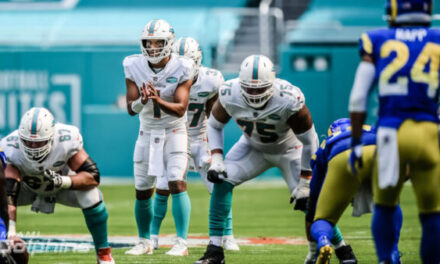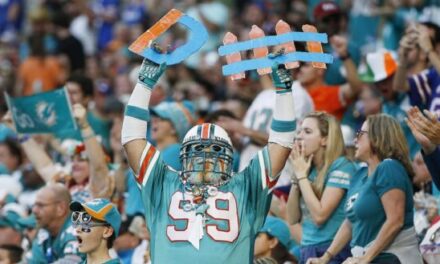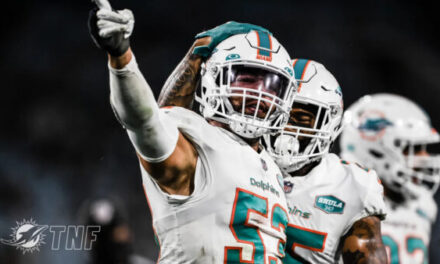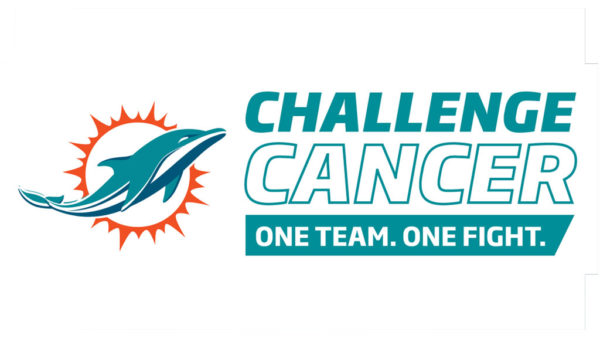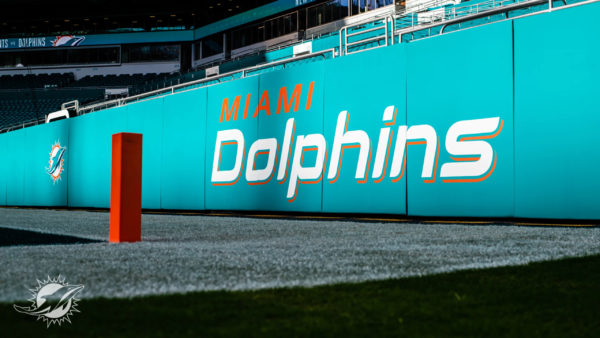
The Miami Dolphins began on-field drills at training camp today. It was an offseason that started out fast and exciting but quickly petered out as the team approached the draft with little capital to make a move.
Instead of talking about the obvious storylines that have been covered to death, it’s time to dive into some underrated storylines from Miami’s training camp.
How much will the defense change?
Most of Miami’s focus this offseason was on improving the offense, which they needed to do. They did that in spades, but their approach on defense was to pretty much keep everything status quo.
They drafted linebacker Channing Tindall in the third round and signed EDGE Melvin Ingram to a contract in June. Still, the team is bringing back all the starters from last season and defensive coordinator Josh Boyer.
There have been hints of some minor changes that Boyer is implementing, but the team’s heavy blitz/cover-one system is expected to stay. Additionally, barring Tindall or Ingram wiggling their way into the starting lineup, the team is expected to start the same 11 players they did last year.
There are two problems with this. One, this will be year three of this defense, so it’s not hard to imagine teams having more answers for it. Two, Miami’s defense beat up on many bad quarterbacks last season.
They kept Lamar Jackson in check, but Tom Brady, Josh Allen, Derek Carr, and even Carson Wentz had solid days against them. Simply put, Miami’s defense has come up short against elite quarterbacks the past couple of seasons.
Most teams do! It’s what makes those quarterbacks so elite.
The issue is most teams try to implement changes to their defense to make themselves more adept at dealing with high-caliber passers. Miami’s defense is the same. This isn’t to say players can’t get better or that Miami’s defense will struggle against talented quarterbacks again this season, just that it’s worth keeping an eye on.
The Dolphins play Josh Allen twice, Lamar Jackson, Joe Burrow, DeShaun Watson (maybe), Justin Herbert, and Aaron Rodgers this season. Miami’s defense beat bad teams last season; now it’s time for them to beat some good ones.
The small changes Boyer makes could go a long way to accomplishing that goal or causing a full-scale disaster, and training camp should provide a lens to see those changes.
[pickup_prop id=”25460″]
How many UDFAs make the active roster?
While Miami’s haul from the first seven rounds of the NFL Draft was rather light, its UDFA class has many intriguing names.
The top of the list includes former Arizona State offensive tackle Kellen Diesch and former Oregon safety Verone McKinley, who received draftable grades from many draft analysts (this one included).
Miami improved the offensive line this summer, but there are still several question marks both in the starting lineup and for their depth. This leaves the door open for Diesch, who is 6-foot-7-inches and 301, making him the perfect fit for McDaniel’s scheme.
As for McKinley, he’s the benefactor of Miami’s lackluster safety depth. Jevon Holland, Brandon Jones, and Eric Rowe have their designated roles, but there’s not much to write home about behind them.
McKinley is an intelligent player with solid ball skills, experience on special teams, and a good leadership pedigree. He won’t be a starter—barring injury—but it’s hard to imagine him not making the team one way or another.
Other UDFAs to watch include running back ZaQuandre White, offensive lineman Blaise Andries, and tight end Tanner Connor, who recorded a 4.37 40-yard dash, jumped 39.5 inches in the vertical, and jumped 10 feet, 7 inches in the broad jump. Those numbers are nuts.
How will McDaniel’s coaching style translate to the field?
McDaniel is about as different as Brian Flores as it gets when it comes to speaking with the media and the atmosphere he reportedly promotes on the practice field. He’s been typecast as a “player’s coach.”
That term has a lot of positive connotations, but it comes with a negative one too. Pundits frequently paint “player’s coaches” as undisciplined when teams start to lose games. Seeing how the team responds to McDaniel during training camp could illuminate how his coaching style will affect the team.


